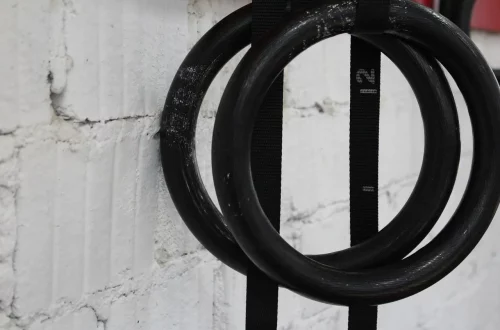
Tongue Scraper Before and After: Transforming Your Oral Hygiene Routine
Oral hygiene is a crucial aspect of overall health that often gets overlooked. While most people are diligent about brushing and flossing, they frequently neglect an equally important area: the tongue. The surface of the tongue can harbor bacteria, food particles, and dead cells, which can contribute to bad breath and other oral health issues. The practice of cleaning the tongue is not new; it has been utilized in various cultures around the world for centuries. However, in recent years, tongue scrapers have gained popularity as a practical tool for enhancing oral hygiene.
Tongue scraping is a simple yet effective addition to your daily routine. By removing the buildup on your tongue, you can improve your breath, enhance your taste sensation, and promote a healthier oral environment. Many people report noticeable differences in their oral health after incorporating this practice. Despite its benefits, tongue scraping is still not widely discussed or implemented, leaving many individuals unaware of its potential advantages.
In this article, we will explore the transformative effects of using a tongue scraper, how it complements traditional oral hygiene methods, and the overall impact it can have on your dental health. Whether you’re a seasoned dental care enthusiast or someone just beginning to explore the vast world of oral hygiene, understanding the role of tongue scraping can lead to a fresher and healthier mouth.
Understanding the Benefits of Tongue Scraping
Tongue scraping offers a multitude of benefits that can significantly improve your oral hygiene routine. One of the primary advantages is its role in reducing bad breath. The tongue is a breeding ground for bacteria that can produce volatile sulfur compounds, which are responsible for unpleasant odors. By regularly scraping the tongue, you can effectively remove these bacteria and their byproducts, leading to fresher breath.
Another significant benefit of tongue scraping is enhanced taste perception. A coated tongue can dull your sense of taste, making it difficult to enjoy the flavors of food. When you remove the layer of debris and bacteria from your tongue, you may find that your taste buds are more reactive, allowing you to savor your meals better. This can be particularly beneficial for those who are trying to maintain a healthy diet, as it encourages a greater appreciation for natural flavors.
Additionally, tongue scraping contributes to overall oral health by promoting a cleaner mouth. When food particles and bacteria are removed from the tongue, it can help reduce the risk of plaque buildup on teeth and lower the chances of gum disease. Furthermore, a cleaner mouth can lead to fewer dental issues, which can save you money and discomfort in the long run.
It’s also worth noting that tongue scraping can improve your overall health. Oral bacteria can enter the bloodstream and potentially lead to systemic health issues, including heart disease and diabetes. By maintaining a clean mouth, you are taking proactive steps to support your overall well-being.
In summary, the benefits of tongue scraping extend beyond just fresher breath. By incorporating this practice into your daily routine, you can enhance your taste perception, promote better oral health, and potentially reduce your risk of systemic health issues.
How to Properly Use a Tongue Scraper
Using a tongue scraper is a straightforward process, but proper technique is essential to maximize its benefits. First, you’ll need to choose the right tongue scraper. They come in various materials, including plastic, stainless steel, and copper. Each material has its advantages, so you may want to try a few to see which one feels most effective for you.
Once you have your scraper, the next step is to ensure your mouth is clean. It’s best to use the scraper after brushing your teeth, as this will help remove any remaining bacteria and food particles. Stand in front of a mirror to get a clear view of your tongue. Stick out your tongue as far as possible to expose its surface.
Start at the back of your tongue and gently place the scraper on the surface. Apply light pressure as you pull the scraper forward toward the tip of your tongue. It’s important to avoid using too much force, as this can irritate the sensitive tissue of the tongue. After each scrape, rinse the scraper under running water to remove any debris. Repeat this process several times until you feel that your tongue is clean.
It’s advisable to scrape your tongue at least once a day, preferably in the morning before eating or drinking. Some individuals may benefit from scraping their tongue twice a day, especially if they struggle with bad breath. Remember to clean your tongue scraper after each use to prevent the buildup of bacteria on the tool itself.
Incorporating tongue scraping into your daily oral hygiene routine can be a game-changer. By following these simple steps, you can ensure that you’re effectively removing bacteria and debris from your tongue, leading to improved oral health and fresher breath.
Common Misconceptions About Tongue Scraping
Despite the growing popularity of tongue scraping, there are still several misconceptions that can deter individuals from trying it. One common myth is that tongue scraping is painful or uncomfortable. While it may take some getting used to, most people find the process to be gentle and effective. If you experience discomfort, it may be due to using excessive pressure or scraping too aggressively.
Another misconception is that brushing your teeth is sufficient for maintaining oral hygiene. While brushing and flossing are crucial, they do not adequately address the bacteria and debris that accumulate on the tongue. Tongue scraping serves as a complementary practice that targets a specific area of the mouth, making it an essential part of a comprehensive oral hygiene routine.
Some people may also worry that tongue scraping can harm the tongue. When done correctly, tongue scraping is safe and beneficial. It’s important to use a clean, high-quality scraper and to follow the proper technique to avoid any irritation. If you have concerns about your oral health or experience persistent discomfort, it’s always advisable to consult a dental professional.
Lastly, some individuals assume that tongue scraping is unnecessary if they have good oral hygiene habits. However, even those who brush and floss regularly can benefit from tongue scraping. Everyone has a unique oral environment, and regular scraping can help maintain freshness and prevent potential issues.
By dispelling these common misconceptions, more individuals can feel empowered to incorporate tongue scraping into their oral hygiene routines, ultimately leading to improved health and well-being.
Incorporating Tongue Scraping into Your Daily Routine
Making tongue scraping a regular part of your daily oral hygiene routine is easier than you might think. To start, choose a time that works best for you—many people prefer to do it in the morning as part of their daily grooming rituals. This not only helps to freshen your breath for the day ahead but also sets a positive tone for your oral care.
Consider keeping your tongue scraper in a visible and accessible location, such as near your toothbrush or in your bathroom cabinet. This will serve as a reminder to incorporate it into your routine. If you find mornings hectic, you might also choose to scrape your tongue in the evening after brushing your teeth. The key is consistency; the more regularly you practice tongue scraping, the more benefits you will reap.
To enhance your experience, you might want to pair tongue scraping with other oral hygiene practices. For instance, after scraping your tongue, follow up with mouthwash to further eliminate bacteria. You can also try using flavored or therapeutic mouthwashes that can add an extra layer of freshness to your routine.
Additionally, it can be helpful to educate your family members about the benefits of tongue scraping. Encouraging them to adopt this practice can lead to a healthier household and foster good oral hygiene habits in children.
Finally, keep track of any changes you notice in your oral health after incorporating tongue scraping. Many individuals report improvements in breath, taste, and overall mouth cleanliness. Documenting these changes can serve as motivation to maintain your routine and inspire others to do the same.
In conclusion, incorporating tongue scraping into your daily routine is a simple yet effective way to enhance your oral hygiene. By making it a regular practice, you can enjoy the benefits of fresher breath, improved taste perception, and better overall oral health.
**Disclaimer: This article is not intended as medical advice. For any health concerns or issues, please consult a qualified healthcare professional.**




